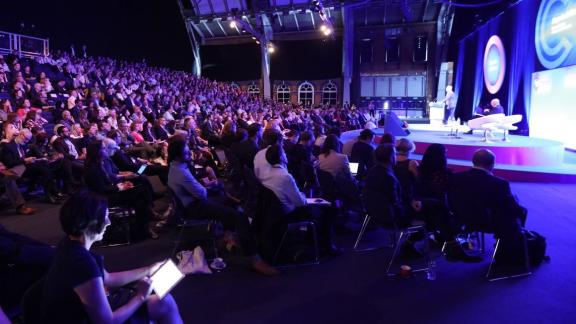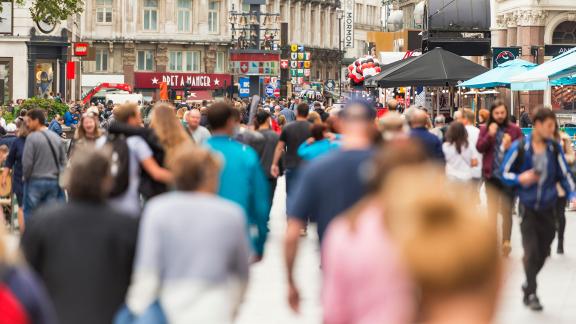Addressing vaccine hesitancy concerns in Leicester

In 2020, Leicester experienced a hard lockdown that lasted over a year. High rates of COVID-19 were being experienced throughout the city, with a disproportionate number of deaths in high-density intergenerational and deprived communities, especially those from ethnic minority communities.
Six GP practices in Leicester worked with a variety of partners to address vaccine hesitancy concerns. They also adopted a personalised approach which, although time-consuming, proved to be very effective at increasing vaccine uptake.
Key benefits and outcomes
- Gap in vaccine uptake between ethnic groups in Leicester and Leicestershire has reduced.
- Data helped identify communities where health literacy was poor, so they were quickly offered support.
- 90 per cent of one-to-one conversations in vaccine hesitant communities led to a vaccine appointment being booked by the end of the call.
- In the South Asian (Indian origin) communities, vaccine uptake became only 5 per cent lower than among white British people.
What the organisation faced
Leicester has a large ethnic minority population. Around half of its residents stem from an ethnic minority background, with South Asians of Indian origin comprising half the population. A large Eastern European population also resides in the city centre.
When the vaccine programme started in late 2020, there was a lot of vaccine hesitancy especially within the Afro-Caribbean and Somalian communities. However, the data showed there was also lower uptake in deprived communities and those areas with a high population density, ie people living in intergenerational families.
There were many reasons behind vaccine hesitancy. The South Asian community would receive messages via WhatsApp groups regarding the impact of the vaccine on their fertility. Adding to the confusion was the government’s advice at that time was that pregnant women shouldn’t have the vaccine. Across the year this advice changed.
In the Afro-Caribbean community there was a general suspicion over vaccine side effects and government advice. These were fears grounded in the past, when communities felt they had been used as health ‘guinea pigs.’
Hesitancy was across the board, although it was often the younger groups who were the most resistant and they could influence older members of their household.
In the outer estates, ethnicity and culture compounded the deprivation. Health literacy was often quite poor in these areas, even though COVID-19 news was around all the time. Many communities didn’t understand the concept of self-isolation or how it was spread, or the impact on individuals. The economic situation of people on zero-hours contracts was also a very challenging factor, as they found it difficult not to go to work or self-isolate, as it would mean not being paid.
What the organisation did
There was a wide recognition among health teams and their partners that however challenging the situation appeared, mass vaccination was one of the key ways out of the pandemic.
Six GPs practices partnered with the local authority and voluntary sector (faith groups and charitable organisations) to develop a media/ education campaign specifically targeting relevant populations.
Radio was quickly found to be a successful way to send out messages in different languages. This had a big reach as these radio stations were listened to in many large work places, such as the hosiery, clothing and other factories in the area.
Additionally, data was sourced from health systems to see who hadn’t turned up for the vaccine. This often required a one-to-one conversation with hundreds, even thousands, of patients. When individuals were spoken to personally they would readily explain the reason for their hesitancy. It was often very personal and linked to their medical problems, some had drug allergies (10 per cent of the population are affected), while others didn’t fully appreciate the benefits of vaccination.
Most of the vaccinations were given by GPs, as they are seen as trusted health professionals and the practices are accessible. However, faith groups wanted more accessible vaccination sites, so several pop-up vaccination sites were also set up in mosque car parks. A pop-up site was also located on a housing estate with a high Somalian population. Many in this population didn’t own cars and so weren’t comfortable travelling to a site that was far away.
Results and benefits
Speaking to people individually was found to be the most effective way to address vaccine hesitancy concerns. Six practices were involved in this time-intensive work. Ninety per cent of the people spoken to directly agreed to have the vaccine and the appointments were booked there and then. The actual attendance was an impressive 95 per cent.
The process was refined as it progressed. Patients would receive a first call from a GP receptionist, who conveyed key messages via a script. Sixty per cent of people called were happy with this approach. Those who were weren’t would instead receive a call from a nurse (there is more nurse time available). However, 20 to 30 per cent still wanted to speak to a GP, and 5 to 10 per cent were still highly vaccine hesitant.
In the South Asian (Indian origin) communities specifically, the partnership work was so successful that uptake was only 5 per cent lower than white British.
Having faith leaders on board also helped, as some communities follow the lead of their faith leaders. Although mosques and temples had closed, some mosques would still broadcast the services in their own neighbourhoods. This proved vital around Ramadan in spring 2021, when there concern that Muslim people wouldn’t have the vaccine for fear that their the fast wouldn’t be valid. Faith leaders supported the message that wasn’t the case and it was ok to have the vaccine.
Although there is still a difference in vaccine uptake between ethnic groups in Leicester and Leicestershire, the interventions have reduced this gap.
Overcoming obstacles
Taking the time to address vaccine myths was time intensive. It’s easy to send a text message to 1,000 people, but because many of the younger generation were still working, often doing shift work, they needed to be contacted outside of ‘normal’ working hours in the evenings/weekends. This was addressed by involving all GP reception staff, as well as nurses and GPs, and the vital support of community partners, who helped to spread the message to their own communities.
Health teams even knocked on doors to ask people if they’d have their COVID-19 vaccination, if they weren’t contactable via the phone. This is where the feedback on health literacy occurred – people of all ages often weren’t aware about the benefits of vaccination, or how COVID-19 was spread easily by close contact.
Takeaway tips
- Despite being time-intensive, one-to-one conversations are the most effective way to address concerns.
- Team work is essential as solutions often required the support of partners.
- Refine processes as time goes on and take a pragmatic approach to problems.
Further information
For more information on the work in this case study, please contact Professor Azhar Farooqi, azhar.farooqi@nhs.net



